Mexico City, a vibrant metropolis brimming with culture and history, is home to a plethora of world-class museums. Among these, the Museo Soumaya stands out, not just for its impressive art collection, but also for its strikingly unique and controversial architecture. Funded by Carlos Slim, a prominent figure in Mexican telecommunications, and designed by his son-in-law Fernando Romero, the Museo Soumaya was conceived to house Slim’s extensive private art collection and offer free access to the public. While its gleaming, scale-like exterior is undeniably captivating, the museum’s interior layout and visitor experience have drawn both admiration and criticism, prompting questions about its functionality as a space for art appreciation.
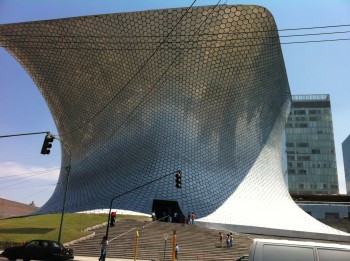
The trend of museums commissioning ambitious architectural projects is common, often driven by the desire to create iconic structures that attract visitors and enhance the institution’s prestige. The Museo Soumaya is a prime example of this ambition. The initial intention behind such expansions is usually to improve the visitor experience, offering enhanced spaces for art display and public engagement. However, as seen in various cases globally, the focus on architectural grandeur can sometimes overshadow the practical needs of visitors and the art itself. This raises a crucial question: does the Museo Soumaya in Mexico City truly prioritize the visitor experience, or is it primarily a monument to architectural vision?
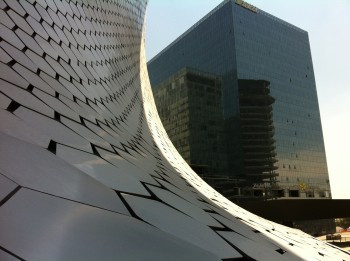
Architectural Grandeur vs. Visitor Navigation at Museo Soumaya
Upon approaching the Museo Soumaya in the upscale Polanco district of Mexico City, the building’s exterior immediately commands attention. Its shimmering facade, composed of thousands of hexagonal aluminum tiles, evokes a sense of modernity and artistic innovation. The design is undeniably impressive, resembling a colossal, abstract sculpture. Finding the entrance is straightforward, marked by a prominent staircase leading from the street level directly to the museum doors. This initial accessibility is a positive note, suggesting visitor consideration in the external design.
However, stepping inside the Museo Soumaya reveals a different story. The entrance leads into a vast, stark white atrium, a cavernous space that, while visually striking in its scale, can feel overwhelming. The bright, reflective surfaces, combined with a mix of fluorescent and office-style lighting, can create an almost disorienting effect. The atrium houses a few prominent sculptures, such as casts of Rodin’s “The Thinker” and the “Laocoön Group,” seemingly placed without clear contextual connection to the surrounding space or the museum’s overall collection. While these are iconic works, their random placement within the overwhelming atrium contributes to a sense of disorientation rather than artistic immersion.
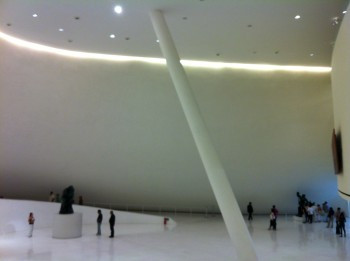
Navigating the Interior: Staircase and Gallery Challenges
From the atrium, visitors are directed towards a grand staircase to access the museum’s upper levels. While a grand staircase can be an architectural highlight, at Museo Soumaya, its design presents practical challenges. The staircase is rendered entirely in white, with steps that seamlessly blend into one another. The lack of contrasting anti-slip strips makes it difficult to distinguish individual steps, particularly when descending. This design choice, prioritizing aesthetics over safety and accessibility, poses a potential hazard for visitors, especially children and the elderly.
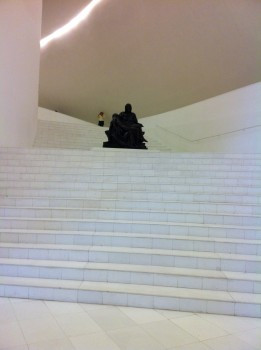
Moving into the gallery spaces, the sense of disorientation and questionable design choices continues. The layout appears haphazard, with collections and artworks displayed without clear thematic or chronological organization. Paintings are sometimes hung with their backs exposed, and the lighting, often generic office lighting, is inadequate for highlighting the nuances of the art. Visitors may encounter unexpected ramps leading to different levels, further contributing to a disjointed and confusing navigation experience. The sheer volume of objects on display, crammed into relatively small gallery spaces, can feel overwhelming, resembling a “cabinet of curiosities” rather than a curated art museum.
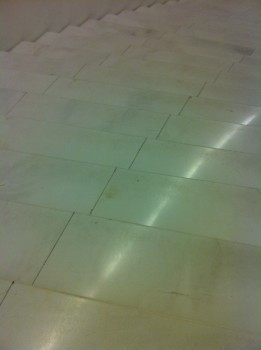
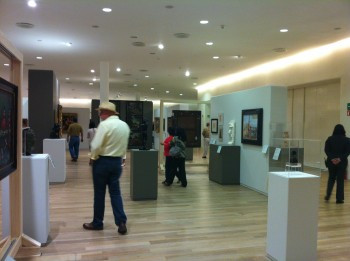
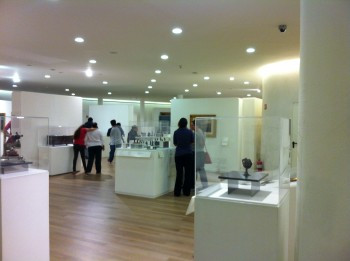
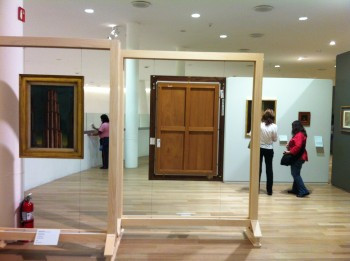
Collection and Curation: A Missed Opportunity?
The Museo Soumaya houses an eclectic collection spanning from European masters to Mexican art, including a significant collection of Rodin sculptures and works by Mexican muralists. While the collection itself contains notable pieces, the presentation and curation within the museum fall short of effectively showcasing its breadth and depth. The lack of clear narrative, thematic organization, and appropriate lighting detracts from the visitor’s ability to engage meaningfully with the artworks. The museum’s potential to educate and inspire is diminished by the overwhelming and disorganized display.
Conclusion: Architecture Over Experience?
The Museo Soumaya in Mexico City is undoubtedly an architectural landmark, a visually stunning structure that has become an iconic part of the city’s skyline. However, beneath its gleaming exterior, the museum’s interior design and curatorial choices raise concerns about its functionality as a visitor-centered art space. While offering free admission is a commendable effort to democratize access to art, the confusing layout, potential safety hazards, and disorganized displays detract from the overall visitor experience. The Museo Soumaya seems to prioritize architectural spectacle over the thoughtful presentation of its collection and the comfort and engagement of its visitors. Perhaps the most rewarding experience of the Museo Soumaya is admiring its striking form from the outside, before exploring the rich artistic offerings of other museums in Mexico City that offer a more cohesive and visitor-friendly environment.
[
